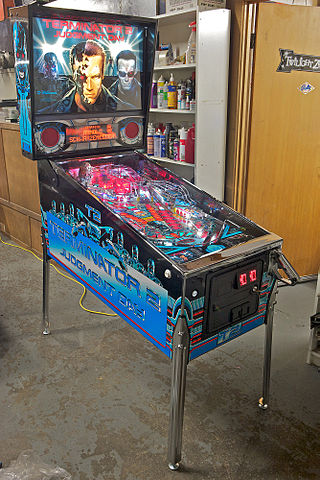
Pinball games are a family of games in which a ball is propelled into a specially designed table where it bounces off various obstacles, scoring points either en route or when it comes to rest. Historically the board was studded with nails called 'pins' and had hollows or pockets which scored points if the ball came to rest in them. Today, pinball is most commonly an arcade game in which the ball is fired into a specially designed cabinet known as a pinball machine, hitting various lights, bumpers, ramps, and other targets depending on its design. The game's object is generally to score as many points as possible by hitting these targets and making various shots with flippers before the ball is lost. Most pinball machines use one ball per turn, and the game ends when the ball(s) from the last turn are lost. The biggest pinball machine manufacturers historically include Bally Manufacturing, Gottlieb, Williams Electronics and Stern Pinball.
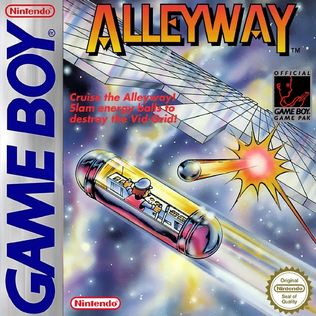
Alleyway is a 1989 video game developed by Nintendo and Intelligent Systems and published by Nintendo as a global launch title for the Game Boy. It is a Breakout clone and one of the first four games developed and released for the system. The game was released first in Japan in 1989, in North America later that year, and in Europe in 1990. It was later re-released for the Nintendo 3DS Virtual Console in June 2011, and on the Nintendo Switch Online service in May 2024.

Kirby's Pinball Land is a 1993 pinball video game developed by HAL Laboratory and published by Nintendo for the Game Boy. It was HAL Laboratory's third pinball video game after the MSX and NES title Rollerball and the Game Boy title Revenge of the 'Gator. It was also the first spin-off and second Game Boy title in the Kirby series, as well as the second pinball video game Nintendo published after the NES title Pinball. The game was rereleased on the Nintendo 3DS Virtual Console service in July 2012.

Pokémon Pinball: Ruby & Sapphire is a 2003 pinball game developed by Jupiter and published by The Pokémon Company and Nintendo for the Game Boy Advance handheld game console. It was first revealed at E3 2003. The North American release was done to coincide with the fifth anniversary of the North American release of Pokémon Red and Blue. It is based on Pokémon Ruby and Sapphire, and is a sequel to Pokémon Pinball for the Game Boy Color. In some ways, it plays like a traditional pinball game, where the objective is to get a high score by keeping the ball in play as long as possible and hitting bumpers. In keeping with the theme of Pokémon, it features Pokémon collection, where while the players play pinball, they must also capture the eponymous creatures.

Rollerball is a video game produced by HAL Laboratory in 1984 for the MSX. A Nintendo Entertainment System version of the game was released in 1988. It is designed to be played by one to four players, in turn. It is an emulation of a pinball machine.

Pinball is a pinball video game developed by Nintendo and HAL Laboratory and published by Nintendo for the Nintendo Entertainment System. It is based on a Game & Watch unit of the same name, and was first released for the Famicom in Japan in 1984. It was later released as an arcade game for the Nintendo VS. System in Japan and North America in 1984. In 1985, it was a launch game for the Nintendo Entertainment System in North America.
A glossary of terms, commonly used in discussing pinball machines.

Kirby’s Block Ball, known in Japan as Kirby no Block Ball, is a 1995 video game developed by Tose and Nintendo and published by Nintendo for the Game Boy portable console. It is a spin-off of the Kirby video game series. It is a Breakout clone; the player controls paddles along the screen's edge to knock a bouncing ball, Kirby, into destructible bricks. The game's 55 levels include power-ups, bonus rounds, and minigames. The team spent half a year revising the gameplay to match Kirby's signature characteristics. Kirby's Block Ball was released in Japan on December 14, 1995, later in North America on May 13, 1996 and finally in Europe on August 29, 1996.
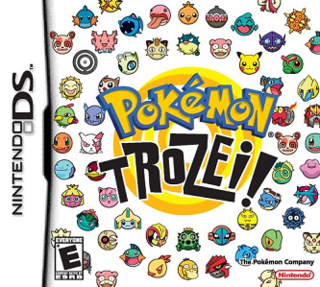
Pokémon Trozei! is a Pokémon-themed puzzle video game for the Nintendo DS developed by Genius Sonority and published by Nintendo and The Pokémon Company. It was released in Japan on October 20, 2005, in North America on March 6, 2006, in Australia on April 28, 2006, and in Europe on May 5, 2006. Trozei is a Romanization of its Japanese title Torōze, meaning "Let's get/take (Pokemon)".

Galactic Pinball is a pinball video game for Nintendo's Virtual Boy game console. The game was released on July 21, 1995 in Japan and on August 14, 1995 in the United States. It is set in the Milky Way galaxy, and has players maneuvering a puck around one of four pinball tables available in the game. The Virtual Boy's standard red-and-black color scheme resulted in criticism of this and other games on the platform for causing nausea, headaches, and eye strain. It uses parallax, which allows the game to display three-dimensional effects. It has received a mixed reception; it was praised for its authenticity, while reception to its physics and controls were mixed. It has received criticism for its lack of ambition and originality.
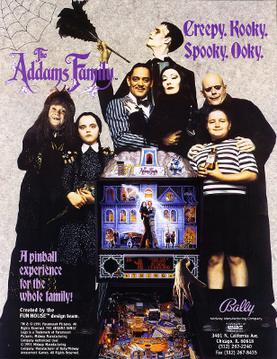
The Addams Family is a pinball machine released in March 1992. It was designed by Pat Lawlor and Larry DeMar and released by Midway. It was based on the 1991 film of the same name, and features custom speech by the stars of the film, Anjelica Huston and Raul Julia. It is the best-selling solid state pinball machine of all time with 20,270 units sold.

Star Trek: The Next Generation is a widebody pinball game, designed by Steve Ritchie and released in November 1993 by Williams Electronics. It was part of WMS' SuperPin series, and was based on the TV series. It is the only pinball machine that features three separate highscore-lists. Apart from the regular highscore-list and the buy-in-list, it also features a reminiscence to The Machine: Bride of Pin*Bot billionaires club. It is also the third pinball game overall based on the Star Trek franchise, following the 1979 pinball game by Bally, and the 1991 game by Data East, and preceding the 2013 pinball game by Stern.

Alien Crush is a pinball video game developed by Compile for the PC Engine/TurboGrafx-16. It was released in 1988. The game is the first installment in the Crush Pinball series. It was followed by three sequels, Devil's Crush, Jaki Crush, and Alien Crush Returns. Alien Crush was later rereleased on the Virtual Console and on the PlayStation Network.
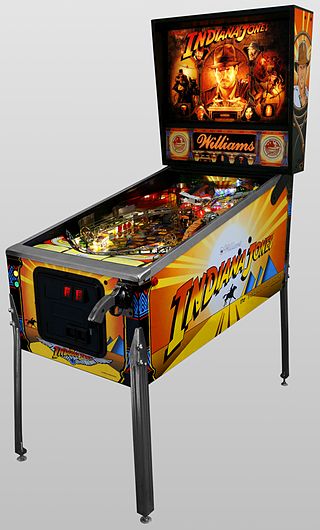
Indiana Jones: The Pinball Adventure is a 1993 widebody pinball game designed by Mark Ritchie and released by Williams. It was based on the Indiana Jones movies. It was also part of WMS' SuperPin series of widebody games.

Fish Tales is a fishing-themed pinball game released by Williams in 1992. It is one of the top 20 most produced pinball machines of all time, selling more than 13,000 units.
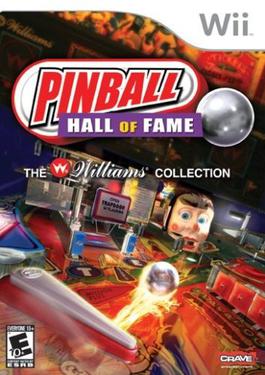
Pinball Hall of Fame: The Williams Collection is a pinball video game developed by FarSight Studios and published by Crave Entertainment for Wii, PlayStation 2, PlayStation 3, PlayStation Portable, Xbox 360, and Nintendo 3DS. Players play on a variety of classic virtual pinball machines from Williams Electronics' history. The Williams Collection follows the previous title, Pinball Hall of Fame: The Gottlieb Collection.

Devil's Crush is a pinball video game developed by Compile for the TurboGrafx-16 and released in 1990. The second installment in the Crush Pinball series after Alien Crush, the game has an eerie occult theme with skulls, skeletons, and demons. It was later followed by Jaki Crush and Alien Crush Returns.
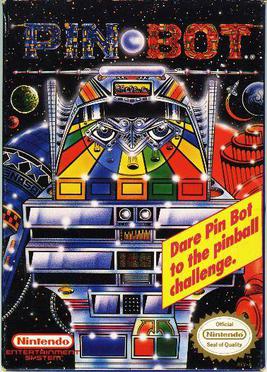
Pin Bot is a pinball video game developed by Rare and published by Nintendo for the Nintendo Entertainment System. It was released in North America in April 1990. It is a conversion of the pinball machine by the same name. The NES version of the game accurately reproduces some of the game-play and aesthetics of the pinball machine, while introducing new features and added challenges.

High Speed is a pinball simulation video game developed by Rare for the Nintendo Entertainment System, and published by Tradewest in 1991. High Speed employs the game engine that Rare previously developed for Pin*Bot (1990).

















